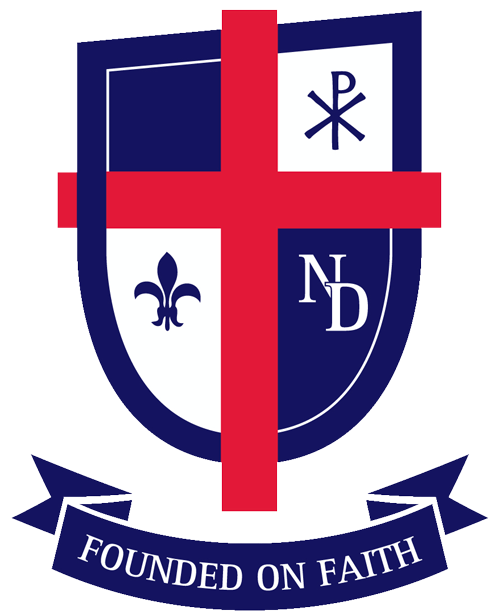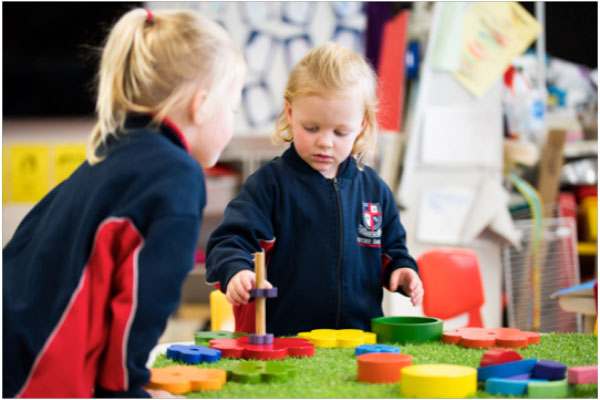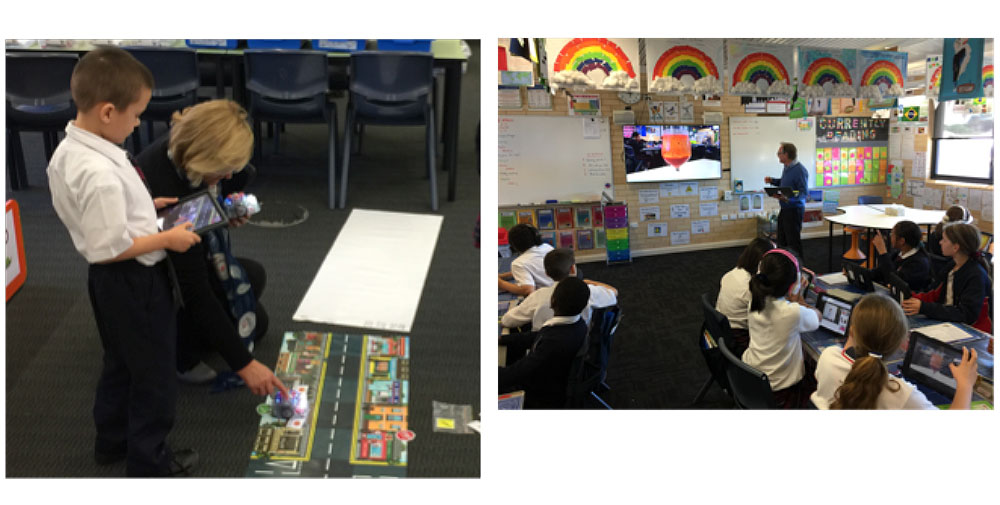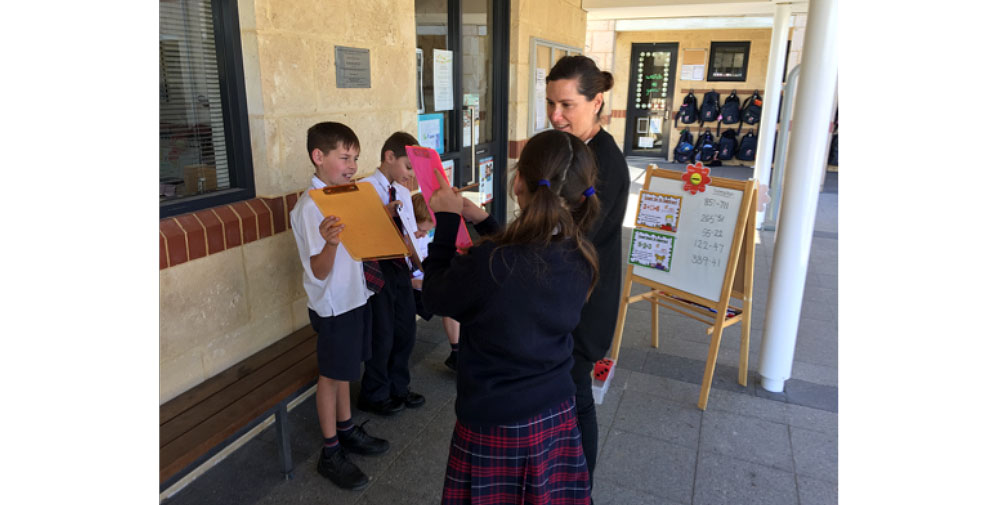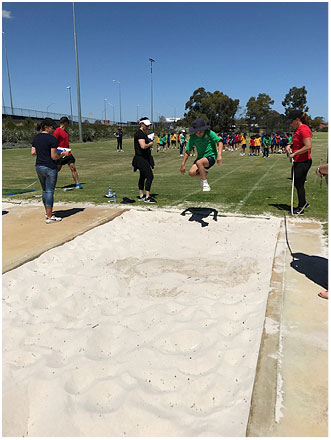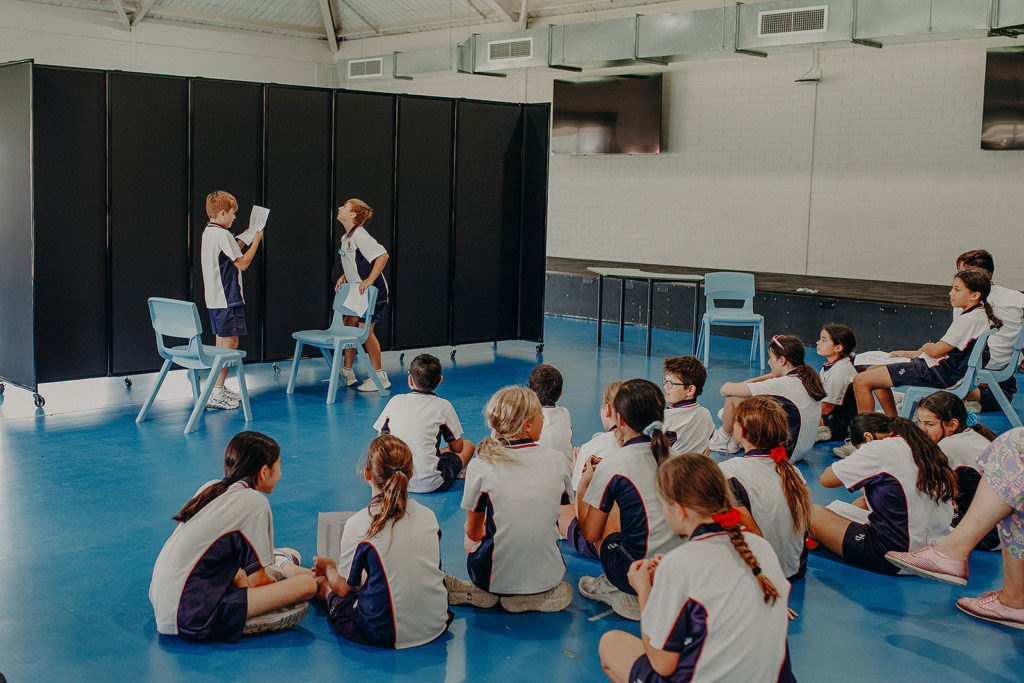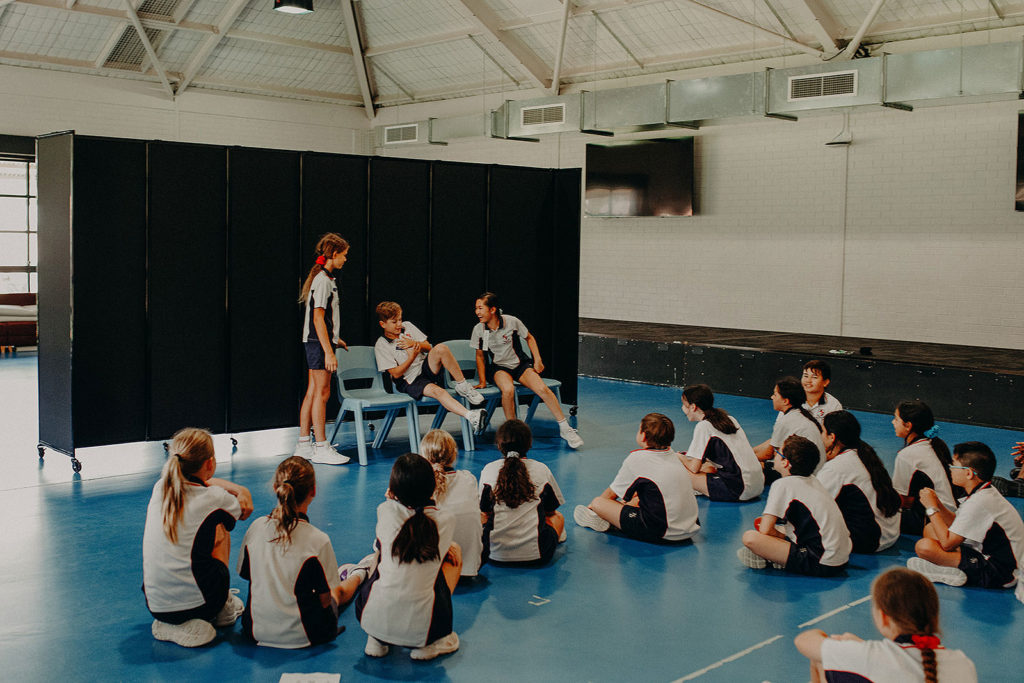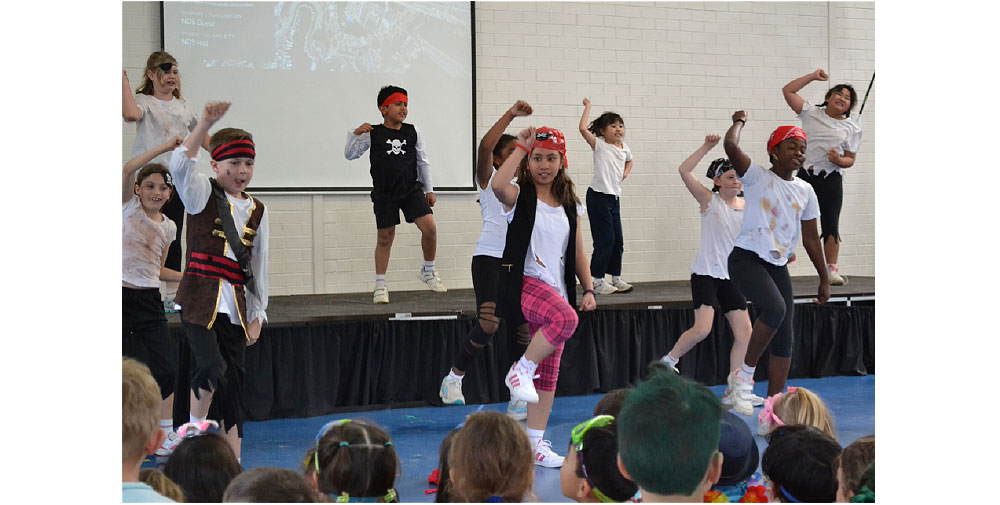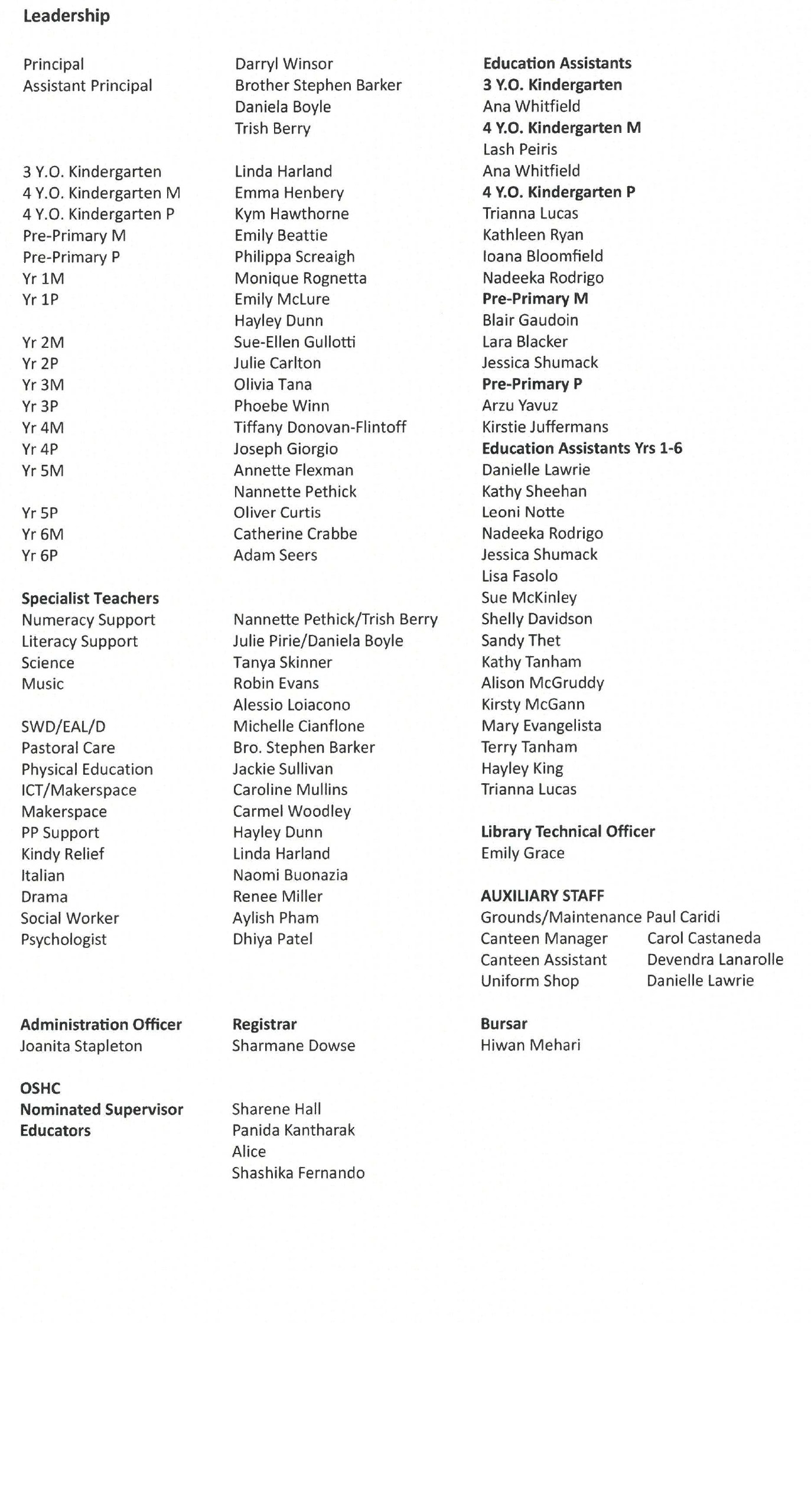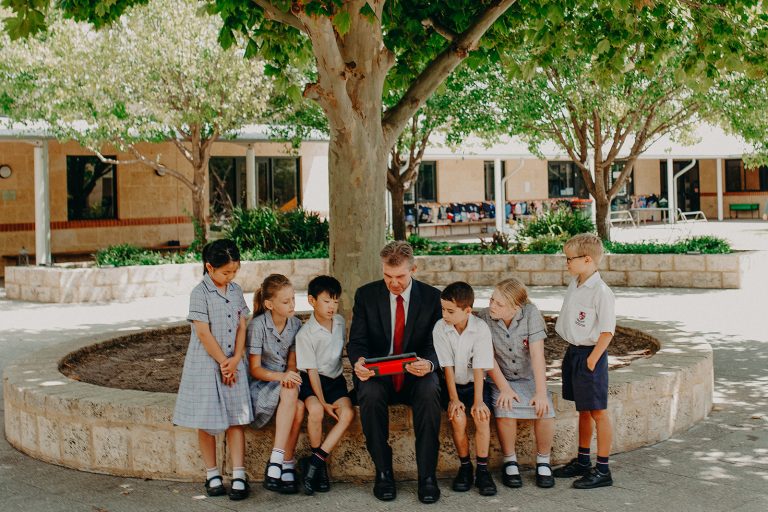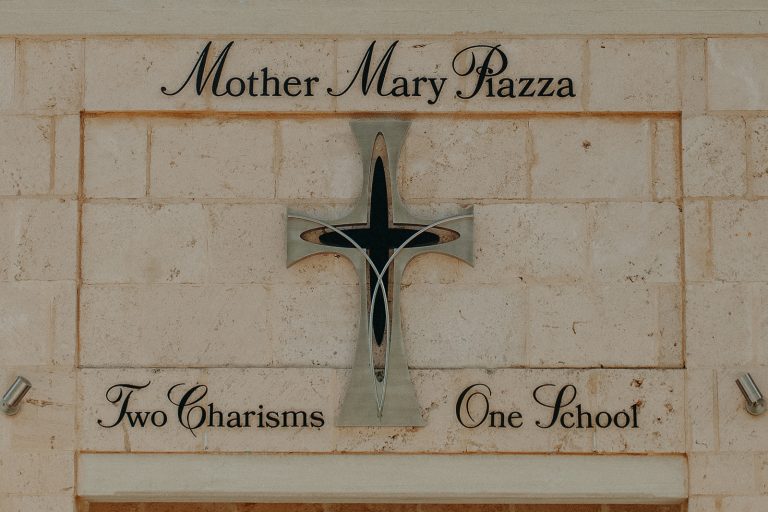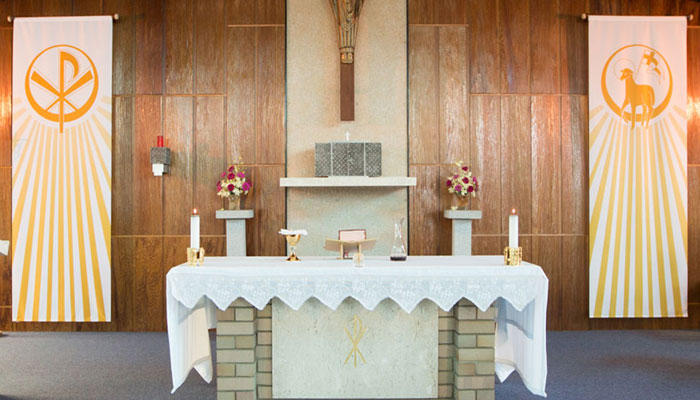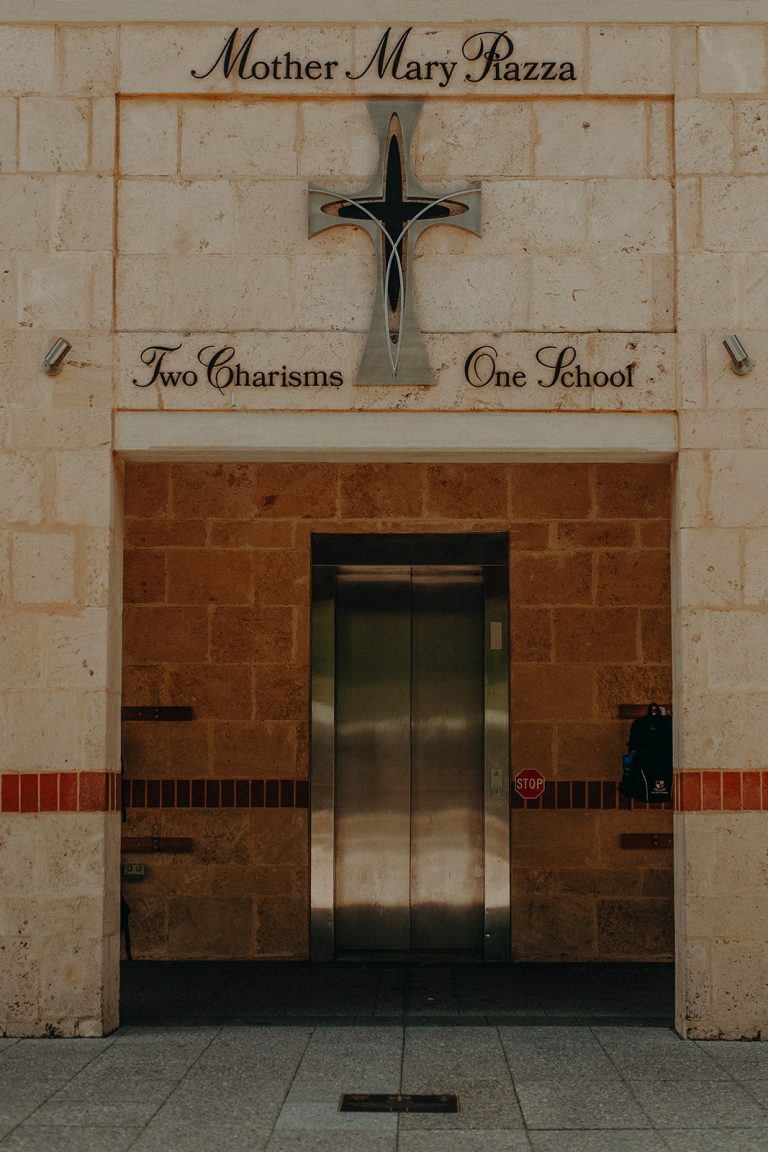School History
School History
THE FORMATION OF NOTRE DAME CATHOLIC PRIMARY SCHOOL
Notre Dame Catholic Primary School (2010) was founded through the amalgamation of two small parish schools, Notre Dame School, Cloverdale and Holy Name School, Carlisle. With urban development and renewal happening in the Rivervale/Cloverdale area a need for a two stream school that could accommodate the growing, younger population was perceived by CEO. The Notre Dame site, with its large, grassed playing area was deemed to best suit the construction of this new, state of the art school.
It must be remembered that although a ‘new’ school, Notre Dame Catholic Primary School has been built on and imbued with the rich histories of both Holy Name School and Notre Dame School. These histories have shaped the formation and direction of the ‘new’ Notre Dame Catholic Primary School.
Holy Name School (Carlisle Campus 2010)
Holy Name Convent School, Carlisle opened in February 1938 under the auspices of the Sisters of Mercy with about 40 students. To encourage enrolments, the sisters would visit Catholic families in the area to encourage them to enrol their children. The response was good and the school population increased yearly. Piano lessons were given at recess and lunch time, and after school to State School children. This tuition was an essential supplement to the school fees. Sister Enda and Sister Romuald travelled daily from the Victoria Park Convent to teach and administer at the school. These were bleak times. The world had just come out of a Great Depression followed by the uncertainty of a difficult war and post war years. Transport was a problem, with the sisters having a long journey by foot and bus to reach the school. On very wet days, the sisters were allowed the ‘exorbitant’ option of taking the tram.
At this date, the Parish was an adjunct of St Anne’s Belmont Parish. Several priests lived in the Parish during the years 1938 – 1952, but the two who gave most extended service were Father Ahern and Father Power. Father Ahern was the Parish Priest at Belmont and said a Sunday Mass each week at Carlisle and visited the school once a week. Father Power was appointed Parish Priest of Carlisle around 1950 and lived initially on the school premises.
Great tribute must be given to the early parishioners of Carlisle who built the Church and were determined to respond to their own faith development and to have their children advantaged by the principles of a Catholic faith combined with academic achievement. Each Friday, the dividing doors were opened and the area organised for Sunday Mass. These parents were tireless in their support for the school having euchre parties, bazaars and raffles to provide money for the ‘extras’ needed as the school progressed.
The Mercy tradition lives on at Holy Name. Just as Catherine McAuley recognised the needs of those who were marginalised and oppressed by unjust social attitudes and practices of the day so, too, does the school today provide educational services to a large number of migrant, refugee and disadvantaged families.
Notre Dame School (Cloverdale Campus 2010)
The Parish of Cloverdale was inaugurated 20 March, 1960 after an increase in the population of the area warranted a new parish. In April 1960, a decision was made to build a Church/school on land secured by Archbishop Prendiville. On 11 April1960 the Parish was placed under the patronage of Our Lady and named Notre Dame. The new school building was completed in November. Notre Dame School was officially opened and blessed by Archbishop Prendiville on the 11 December, 1960.
From the time the Parish was established, Notre Dame School was overseen by the Presentation Sisters. The school opened in January, 1960 with an initial school population of 60 children. In December 1964, due to expansion in the area there became a need for more classrooms and it was decided to build two classrooms, a tuckshop and a staff room. Due to lack of funds, members of the parish were asked to contribute their skills in the building of the extension.
By 1968 enrolment numbers fluctuated between 220 – 240 which included girls up to Year 6 and boys up to Year 5. During this period, Sr Stanislaus, Sr Aloysius, Sr Raphael, Sr Angela, Sr Scholastica, Sr Eugene, Sr Clement, Sr John, Sr Pius and Sr Immaculata administered and taught at the school. As with every Parish, the Religious teacher crisis was felt here in 1967 so when the children came back to school in Feb, 1968, Notre Dame had engaged its first lay teacher, Mrs R Smith.
Bishop Quinn blessed and opened new extensions to the school in September, 1975. These extensions consisted of two new classrooms, an administration block, toilets and a demountable classroom to be used for teaching migrants. Sister Immaculata who had been principal of Notre Dame for many years left the Parish at the end of 1978 and was replaced by Sister Eugene who had been a teacher at Notre Dame in earlier years. Sister Immaculata, with the help of the School Board had done much to upgrade the school which included the establishment of a Library and Resource Centre. This was blessed and opened on the 24 June, 1979. Costs of the project were met equally by Government subsidy and parents’ contributions. Sister Immaculata returned to the school as Principal in 1981. At the beginning of the 1984 school year the school had an enrolment of 267 pupils. The staff comprised of 2 religious, 7 lay-teachers, 2 teacher assistants, 1 part-time teacher, 1 teacher librarian and 2 library assistants.
In 1985 Notre Dame Parish celebrated the Silver Jubilee of the opening of the Parish School. Bishop Healy concelebrated a special thanksgiving mass assisted by several priests who had previously served in the Parish. A new crest and the motto Wisdom Sought is Wisdom Found was adopted at this time. During this period, the school was actively involved in sport and music programmes, successfully participating in music eisteddfods and festivals and competing in district netball, soccer and football competitions.
The next major phase was the establishment of a Pre-Primary centre in 1993 under the principalship of Sister Catherine Ryan. A Kindergarten programme followed in 1996. In 1997 plans were developed for the refurbishment of the school. This project was completed by the beginning of the 1998.
In 2008 the Presentation Sisters, who had administered the school since its foundation, were farewelled by the Notre Dame community. Sister Catherine Warner became the last Religious Principal of the school. After consultation with both communities, a decision was made by the Catholic Education Office to amalgamate Holy Name in Carlisle with Notre Dame and the school’s first lay principal, Mr Paul Hille, was appointed in 2009 to oversee the amalgamation and building of the new school. In November, 2009 a decision was made by Archbishop Barry Hickey to retain the name Notre Dame Catholic Primary School.
CARRYING ON OUR HISTORY: NOTRE DAME CATHOLIC PRIMARY SCHOOL
In 2010 Notre Dame Catholic Primary School became ‘one schooltwo campuses’ as the onerous task of amalgamating two schools with such rich histories and charisms began. From the outset, it was clearly stated that a new school, Notre Dame Catholic Primary School would evolve from the amalgamation of Notre Dame School and Holy Name Carlisle – not simply a closure and takeover of Holy Name by Notre Dame. Transportable City became a reality for the staff, parents and students of the Cloverdale Campus as the demolition of the old school and construction of the new school began.
The new school buildings were completed in January, 2011, with the 2011 school year having students from Pre- Primary to Year 6 housed in the new buildings. The Kindergarten was completed by the end of Semester One, 2011. With exciting times ahead we are most grateful for the Commonwealth grants received, the availability of the State Government Low Interest Loans, the dedication and commitment of the School Board and the tremendous support and enthusiasm offered by the staff, parents and community. The total cost of the build was $10.4 million. We fondly remember the past, we celebrate the present and we continue to look forward to the future of Notre Dame Catholic Primary School.
Logo and Motto
Logo and Motto

Logo Rationale
The Shield
Heraldry has been adopted for thousands of years as a way of ‘family identification’. This shield symbolises our connection to this tradition. It identifies us as part of the Notre Dame Catholic Primary School family and allows us to be recognised as such in the wider community.
Historically, the shape of shields changed over the centuries at the discretion of the artisans and heralds who crafted them. The lack of symmetry in this shield gives this design a more modern look – a mixing of the old with the new, the traditional with the contemporary.
The Cross
The cross is one of the earliest and most widely used Christian symbols. In the broadest sense, it symbolizes the religion of Christianity. More specifically, it represents and memorialises Christ’s death.
The cross is central to the crest as it is to our Catholic faith. The colour red symbolises the love Christ showed to all humanity in dying for us so we could be re-united with God. One arm of the cross lies under the crest reminding us that Christ is present within our school while the cross extends outside the crest symbolising our faith reaching out into the wider community.
The Chi Rho
The Chi Rho is one of the most ancient ‘sacred monograms’ of Christ. The symbol was developed by the early Christians as a secret sign of their faith. This monogram is composed of the two Greek letters of the word ‘Christ. It was later adopted by the Roman Emperor Constantine on his conversion to Christianity and became the symbol of the Church.
The Chi Rho connects us with part of our story. It reminds us that Notre Dame Catholic Primary School was founded on the traditions of two schools – Holy Name Carlisle and Notre Dame School Cloverdale. The Chi Rho was a visible sign of Christ’s presence at Holy Name School. It was integral to the school crest and its presence in the crest of Notre Dame Catholic Primary School will remind future generations of this connection.
The Fleur-de-Lys
The English translation of ‘fleur-de-lys’ is ‘flower of the lily’. Traditionally, it has been used to represent French royalty and in that sense, it is said to signify perfection, light and life. The Church has ascribed the lily, a symbol of purity, as the special emblem of the Virgin Mary.
The fleur-de-lys connects the old ‘Notre Dame School’ with the new ‘Notre Dame Catholic Primary School’. The fleur-de-lys was highlighted on the old school crest, symbolizing that Notre Dame School was under the patronage of Our Lady. Our school name, Notre Dame, which is French for ‘Our Lady’, further raises the significance of the lily as a pivotal symbol to identify this continuing patronage.
Initials – ND
Since the first century, devotion to the Blessed Virgin Mary has been a major element of the spiritual life of many Catholics. From the council of Ephesus in 431 to Vatican II and Pope John Paul II’s encyclical ‘Redemptoris Mater’, Our Lady has come to be seen not only as Mother of God but also Mother of the Church. Our school name, Notre Dame (Our Lady), continues this tradition.
The initials ‘ND’ complete our ‘family’ story. Out of the Chi Rho and Fleur-de-lys emerges a new entity – a school proud of its heritage but forging a new identity. The initials represent the new, contemporary Notre Dame.
School Colours Rationale
Navy Blue
Religious Symbolism
The colour blue is associated in Christianity generally and Catholicism in particular, with the Virgin Mary. Symbolically, blue represents life, purity and cleansing.
Universal Symbolism
The colour blue carries with it the symbolism of peace, intelligence, loyalty, strength, security, stability, wisdom and unity. These qualities are critical to the formation and ongoing development of Notre Dame Catholic Primary School.
Navy blue was chosen as a symbolic colour to connect the two schools of Notre Dame, Cloverdale and Holy Name, Carlisle as the colour blue is represented in both the old logos and uniforms of the two schools. Navy, as the predominant colour, connects the old with the new.
White
Religious Symbolism
In Christianity, a white lily represents the Madonna, our Mother Mary, who is patron saint of Notre Dame Catholic Primary School. In the New Testament, white represents the colour of light (Christ) and symbolises the divine. In Baptism, white represents a ‘new beginning’ and belonging to the Christian faith.
Universal Symbolism
White universally signifies peace, an indication that an agreement between two parties has been reached. White is associated with goodness, innocence and clarity. It is considered to be the colour of perfection.
The colour white was chosen because it projects purity, cleanliness and neutrality – a very important aspect in the amalgamation of the two school.
Red
Religious Symbolism
In our Catholic faith traditions, red is the colour that symbolises the presence of God and is considered the colour of the Church. It is the liturgical colour of Pentecost, the celebration that marks the birth of the Christian church. At Pentecost, the Holy Spirit descended on the apostles – the same Spirit which we call upon to guide us on our journey at Notre Dame Catholic Primary School.
Universal Symbolism
Red, in its most positive sense, is the colour for courage, strength and pioneering spirit. Red signifies energy, liveliness and love. It evokes confidence and determination as well as leadership.
The colour red was chosen because it adds life and vitality to the dominant colours of navy blue and white. The colour red is vibrant, eye-catching and powerful and is linked to the soul of every individual at Notre Dame Catholic Primary School. The strength and pioneering spirit of the school and each individual is reflected through this colour.
